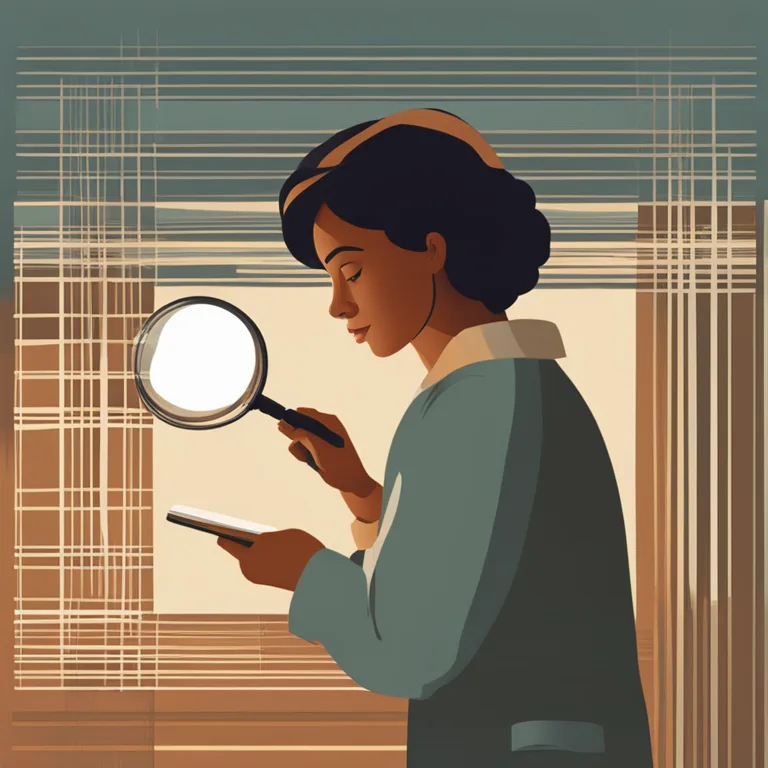
The Accuracy of Palm Lines: A Critical Look
Delve into the world of palmistry to understand how accurate palm lines truly are, with insights into the practice's age-old traditions and modern perspectives.
article by Nora Pennington
The Fascination with Palmistry
Palmistry, or chiromancy, has been a subject of human curiosity for centuries, intertwining its practices with our need to grasp the unknown. Since ancient times, people have looked to the lines on their hands for clues about their life, love, and destiny. But as we continue to seek understanding of these practices in the 21st century, the question of accuracy remains pivotal. Are the lines etched into our palms mere creases or maps towards deeper truths? This exploration begins with the foundations of palmistry and leads us through the modern lens of logic and science.

Historical Underpinnings
Long before the internet and digital horoscopes, palmistry was charting its course through history's pages. Its roots can be traced back to various ancient cultures, including Indian, Chinese, and Egyptian societies, where it was revered as a form of personal insight and even a bridge to the divine. Variations in palm lines were believed by these cultures to be indicative of a person's character and potential future events. This historical reverence sets the stage for understanding today’s interpretation of palm lines, reminding us that such practices hold significant cultural and traditional value.

The Lines and Their Meanings
Primarily, palmistry focuses on three main lines — the heart, head, and life lines. Each one is believed to govern different aspects of existence: love and emotion, intellect and wisdom, and life span and health, respectively. Additional lines and mounts contribute to a more nuanced reading. Interpreters of palmistry attribute varying levels of importance and interpretations to each line, and from here, debates about accuracy arise. As practitioners give readings, the individuality of each person's palm marks the first challenge in achieving a universal understanding of accuracy.
Scientific Scrutiny and Modern Acceptance
In the modern era, where empirical evidence is king, palmistry's claims encounter rightful skepticism. Scientific methods demand reproducibility and testability, which palm readings inherently lack. Yet, despite the lack of scientific endorsement, palmistry is embraced by many seeking personal insight. While some tout it as an accurate psychological tool enabling self-reflection, critics argue that it’s an art of cold reading and tapping into the psychological bias known as the Barnum effect, where generic statements are mistakenly perceived as highly personal.
The Psychological Component
Our brains are pattern-seeking and meaning-making machines, and this can play a significant role in the perceived accuracy of palm lines. When a palm reader provides information that seems closely related to an individual's life, the affirmation can bring about a powerful placebo effect, leading to strong belief in the practice. Moreover, the skill of the reader in interpreting and conveying the lines’ supposed meanings plays a critical role in the outcome of any palm reading session, further complexifying the quest for accuracy.
The Role of Confirmation Bias
The concept of confirmation bias, where individuals favor information that confirms their preexisting beliefs, is also at play in palm readings. Enthusiasts of palmistry may overlook inaccurate readings and remember the accurate ones, thus reinforcing their belief in the practice's validity. It is also worth considering the context in which palm readings take place—often during times of decision-making or uncertainty, when a person might be particularly receptive to guidance, irrespective of its empirical credibility.
Conclusion: A Personal Belief or Universal Truth?
Ultimately, the accuracy of palm lines as a method of divination cannot be validated or dismissed entirely—it rests upon individual belief systems and the subjective experiences of those who consult palmists. For some, it serves as an insightful form of introspection, while for others, it remains an unproven and dubious endeavor. It’s important to approach palmistry with a critical mind, acknowledging that while it offers cultural richness and psychological comfort to many, it does not meet the rigors of scientific evidence as a predictor of specific life outcomes.
Published: 1/5/2024
Modified: 1/5/2024
More predictions
Come back here soon to learn more about yourself and your future


The Essence of Palmistry: A Modern Guide
Delve into the modern practice of Palmistry: understanding the lines and shapes of your hands to reveal insights about your personality and future.


The Changeable Nature of Palm Lines
Discover the factors influencing the ever-changing landscape of palm lines and what these modifications could signify in palmistry.


Hand Reading: The Essence of Palmistry
Delve into the basics of palmistry, the ancient art of hand reading, and learn how it aims to reveal personality traits and life paths.